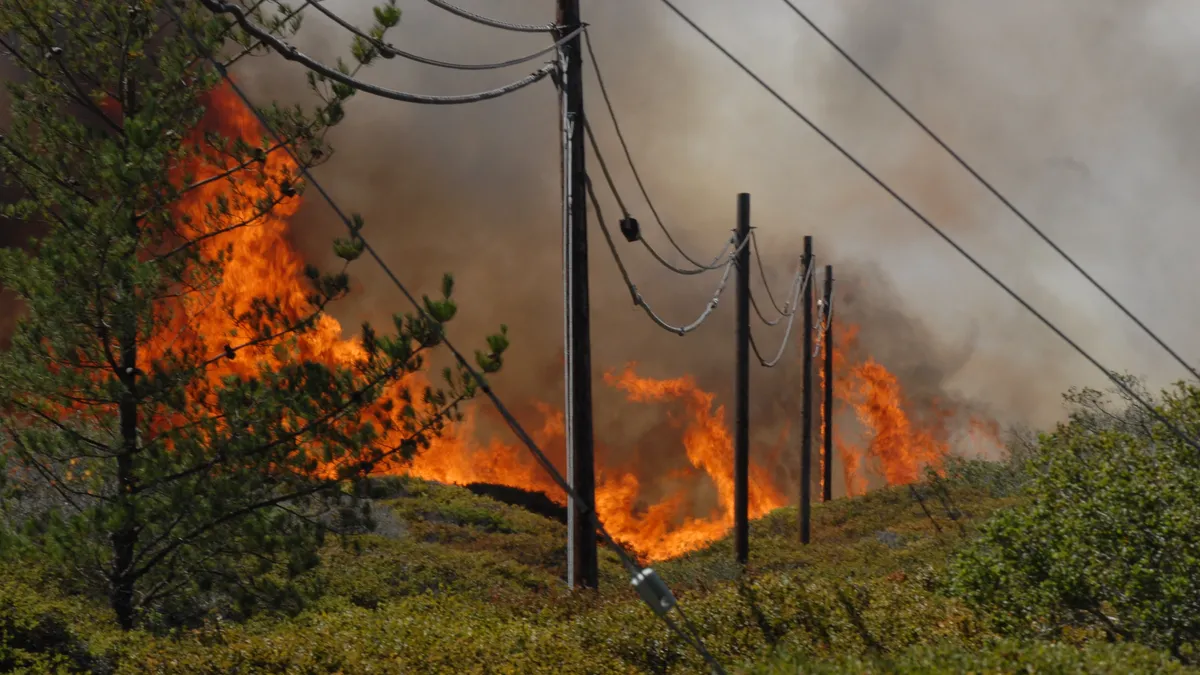Dive Brief:
-
Pacific Gas & Electric (PG&E) filed new information with California regulators on Tuesday detailing transmission equipment failures shortly before the ignition of the deadly Camp Fire in Northern California, which killed at least 86 people.
-
On Nov. 8, the morning the fire started, a PG&E employee reported a fire to authorities near the point where state officials say the Camp Fire began. Subsequent observations revealed a transmission line appeared to separate from its support tower in the area, leaving marks of electrical damage.
-
PG&E stressed the findings are preliminary, but the utility would face serious financial problems if state officials find its equipment responsible for the fire. Last month, California's head regulator assured investors he would keep the utility solvent after fire costs raised concerns of bankruptcy, but said safety investigations could lead to a reorganization of the company.
Dive Insight:
While state officials have not made a final determination over the cause of the Camp Fire, PG&E's Tuesday letter to the California Public Utilities Commission (CPUC) offers the clearest detail yet on how its equipment may have started the blaze.
On Nov. 8, after a PG&E employee reported a fire near its Caribou-Palermo Transmission Line, an aerial inspection revealed that the line and its insulator had separated from one of its support towers and "remained suspended above the ground."
On Nov. 14, PG&E said it returned to the tower with state fire investigators, observing a broken hook that connected the transmission line to the tower, along with "wear at the connection point."
The utility also observed a "flash mark" — a sign of electrical damage — on the tower where the transmission line had separated, as well as damage to the line and its insulator.
The findings come two weeks after PG&E told regulators that it had considered deenergizing its power lines in the area on the morning of the Camp Fire's ignition, but ultimately decided to keep power flowing because wind speeds were decreasing.
In addition to the transmission tower damage, PG&E also reported a distribution system outage on the morning of Nov. 8. The next day, PG&E says an employee found a downed electrical pole "with bullets and bullet holes at the break point of the pole and on the equipment."
If PG&E's lines are found responsible for the fire, California insurance law makes it financially responsible for the damages even if the utility did not violate any safety regulations.
Last month, the utility said those costs would likely exceed its insurance coverage for fire protection. It also withdrew its revolving credit lines, sparking concern that the firm may be preparing for a bankruptcy filing.
In response, CPUC Chairman Michael Picker assured investors publicly that PG&E would not go bankrupt, telling reporters it is "not good policy to have utilities unable to finance the services and infrastructure the state of California needs."
PG&E could still be in for big changes to its corporate structure, however. The CPUC has opened a broad investigation into the safety culture at the company, one that Picker has warned could lead to its reorganization.














